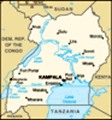An explosive piece of investigative journalism by Hussein Bogere & Simon Musasizi about a huge scandal in Uganda's tourism sector has been published in The Observer yesterday, 30th March 2011. In brief, the article is about a probe committee instituted by the minister of Tourism, Trade and Industry Maj Gen Kahinda Otafiire, which discovered several discrepancies in the amount of money used in the construction of a community lodge in the Bwindi Impenetrable National Park - Cloud Lodge in Nkuringo. The probe also discovered that there is massive exploitation of the community that is supposed to benefit from the lodge, rampant illegal gorilla tracking and forgery of tracking permits and receipts, which drain the wildlife industry of hundreds of millions of shillings monthly. For more on the probe, log onto the web site below adn read
... read more



